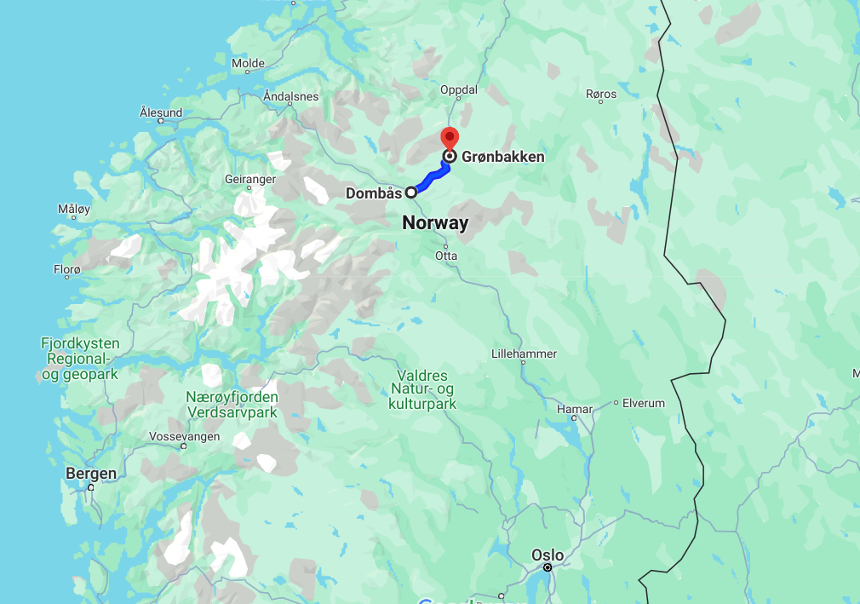Sign up for daily news updates from CleanTechnica on email. Or follow us on Google News!
Norway is leading the world when it comes to making the transition to electric passenger cars. In February, 2024, over 92% of new passenger car sales in Norway were battery electric (90%) or plug-in hybrids (2%). But according to Enova, an agency formed by Norway’s Ministry of Climate and Environment, only 2% of trucks on the road in the country are electric, although electric trucks are now about 10% of new truck sales.
Norway has set a target for all new trucks sold in the country to be electric by 2030. That will require adding many new charging stations capable of providing at least one megawatt of power. To make that happen, Enova is making 60 million kroner (about $5.5 million) available to five Norwegian companies — Mer, Circle K, St1, Tungbil Lading, and Fastcharge — to install charging infrastructure in southern Norway for electric trucks.
In total, there will be 19 charging locations with 108 chargers available along four primary transportation routes that are typically used for moving heavy cargo — Oslo-Svinesund, Oslo-Stavanger, Oslo-Bergen and Oslo-Trondheim. The installations are expected to be completed by the spring of 2025. In addition, chargers for electric trucks will be constructed along three less heavily traveled routes.
“Now it will be possible to use electric trucks on the longer transport stages and where the vehicles have a daily mileage beyond the vehicle’s expected range,” said Nils Kristian Nakstad, head of Enova, who added that “Enova has previously supported the construction of company chargers that are located inside the premises of transportation companies. We believe that the market will welcome these new on-the-go chargers. It is a mature market with professional players and Enova is now helping to accelerate the transition to emission-free heavy traffic.”
“This is a big step on the way towards an emission-free trucking industry. The transition to zero emission trucks is one of the most important measures to cut Norwegian emissions. The proportion of electric trucks has increased significantly in recent years, and access to charging infrastructure for heavy vehicles is crucial for the proportion to increase further. Through Enova, we ensure that the first chargers are in place,” said Climate and Environment minister Andreas Bjelland Eriksen.
Transport minister Jon-Ivar Nygå also praised the Enova announcement. “Emissions from heavy transport must be cut sharply in order for us to reach our climate targets. Therefore, making better arrangements for electric trucks and buses was an important part of the charging strategy that the government put forward a year ago.”
Electric Trucks & Snow Plowing
In northern Norway, keeping roads cleared of snow is a full time job much of the year. People may think hauling freight takes a lot of energy, but blasting a path through snow is a job for the most powerful trucks. Until recently, the task was assigned exclusively to diesel-powered trucks
Last year, Litra, one of the largest freight hauling companies in Scandinavia, purchased two electric trucks with 1000 kWh batteries. The trucks are Volvo FH models converted to battery-electric by Swiss Designwerk Technologies, which has been converting trucks for electric operation for several years. They not only build electric trucks, they also build battery packs and chargers. In 2021, Volvo Trucks bought 60% of the business to take part in the “know-how” and the niche products the Swiss company possesses. Each truck is expected to eliminate about 280,000 kg of carbon dioxide each year they are in operation.

This winter, the Norwegian Road Administration has leased one of the trucks for a month to test its ability to plow the road between Dombås and Grønbakken. The route starts at around 650 meters above sea level and climbs to over 1000 meters above sea level along the way (that’s about 2100 feet to 3400 feet in elevation for those of you who still measure things based on the length of British monarch’s foot).
So far, the truck has been driven for nine hours without charging. It started with a 90% charge and still had 28% left when the day was over. Mizanur Rahaman of the Norwegian Public Roads Administration says that the experience has been good, and that consumption has been lower than expected at 182 kWh per 100 km. They have learned that weather and temperature have not had the same impact as it does on passenger cars, primarily because the cab of the truck is small compared to the size of the battery. For passenger cars, the opposite is true and so some of the energy in the battery has to be used to keep the interior warm. In addition, the truck has technology that keeps the battery warm all the time. Therefore it is not exposed to the cold in the same way as the battery in a passenger car.
 Chip in a few dollars a month to help support independent cleantech coverage that helps to accelerate the cleantech revolution!
Chip in a few dollars a month to help support independent cleantech coverage that helps to accelerate the cleantech revolution!
Charging Is A Challenge
Marthe Ulekleiv is one of the people who drives the electric snow plow. She says the electric truck drives very much like a normal truck. The tractor has four battery packs, two where the fuel tanks would normally be and two mounted to the rear of the cab. It weighs 21 tons metric tons before a four-ton weight is mounted over the drive wheels and the plow is attached.
The difference between driving electric trucks and diesel trucks, she says, is charging. “We had to try a number of different charging stations before we found that the easiest thing was to use three charging places at the local Circle K station,” she says. Other issues are charging cables that are too short and physical configurations that are not designed to accommodate such a large, bulky vehicle.
Charging at the depot is fairly straightforward but charging on the road can be daunting. The Swiss-made electric trucks can accept 350 kW of charging power and charging takes about 2 hours at that level. One feature the Swiss have baked in to these trucks is that the charging curve is almost flat from beginning to end.
But just as more and better charging infrastructure is needed on routes in southern Norway, more high power chargers are needed to serve the needs of electric trucks throughout the country. On the road between Dombås and Grønbakken, for example, the drivers have only about a half hour before the truck has to get back to the task of plowing the road again.
To meet the challenge, not only must there be more high power chargers configured to accept large vehicles, but charging speeds and charging power must be increased. The good news is that batteries that charge faster and chargers with up to 2 megawatts of power are on the horizon.
Conditions this winter have been ideal for testing electric trucks for plowing the roads. There has been a lot of snow and many sub-zero temperatures. In addition to plowing over the mountain, the Norwegian Road Administration has also tested the the truck at its test center in Bjorli, where it has plowed 50 cm of densely packed snow in minus 30 degree weather with ease. “This test shows that it is already possible to use electric vehicles even for the heaviest tasks, namely plowing on mountain passes, says Mizanur Rahaman.
The Takeaway
The US this week began making plans for installing high power chargers for electric trucks. Just like Norway, the US is planning to address the most congested and heavily traveled routes first. While fossil fuel interests are furiously trying to discredit electric vehicles, commercial operators already know that electric trucks are far more efficient and can dramatically lower fuel and maintenance expenses.
Interest in electric cars may be flagging under the assault of the fossil fuel fanatics but commercial operators can’t wait to get more electric trucks and buses in their fleets. Since those vehicles have a disproportionate impact on emissions from the transportation sector, that is good news for us all.
Hat tip to Are Hansen, head of the CleanTechnica news bureau in Norway.
Have a tip for CleanTechnica? Want to advertise? Want to suggest a guest for our CleanTech Talk podcast? Contact us here.
Latest CleanTechnica TV Video
CleanTechnica uses affiliate links. See our policy here.





